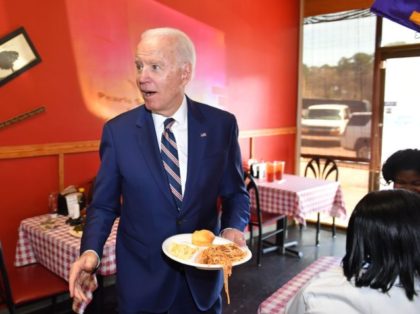Shipping and Warehousing Prices Soar as Supply Chain Chaos Lashes Economy
Peeling back the layers of the supply chain reveals extreme inflationary pressures and bottlenecks in warehousing and shipping.

Peeling back the layers of the supply chain reveals extreme inflationary pressures and bottlenecks in warehousing and shipping.

Putting food on the kitchen table has become much more expensive, squeezing household budgets at a time when many families are already stressed by the Delta variant surge hitting as kids go back to school. Food prices rose a full

Prices charged by U.S. businesses jumped higher in August, data from the Department of Labor said Friday.

Furniture, appliances, and home electronics are all getting pricier.

Instead of cooling off, producer inflation came in even hotter in July.

Economists had been expecting an increase of 0.6 percent, below the 0.8 percent initially reported for May. On a 12-month basis, the consensus forecast was for 6.8 percent.

The Producer Price Index rose 6.6 percent in May from 12-months earlier, the highest recorded for the series since at least 2010.

Prices received by businesses for goods and services jumped 6.2 percent compared with a year ago.

Black unemployment is up. Gasoline prices are up. Food prices are up.

Prices rose much faster in March than economists had forecast.

U.S. producer prices increased by the most since 2009 in January, according to a report released Wednesday by the Department of Labor.

A bit above expectations but still a signal that there is very little inflation in the U.S. economy.

Businesses garnered higher prices for goods and services in September, an indication of rising demand and an easing of deflationary pressures from the pandemic and social distancing rules. The Producer Price Index, which measures prices received by businesses up and

Profit margins for many merchants rose in August, indicating healthier demand than expected amid the pandemic.

The price of gasoline jumped more than 10 percent in July while food prices fell.

Margins were squeezed in June as the economy grappled with an unsteady reopening, rioting, and widespread social unrest.

Beef prices jumped 69 percent in May, according to the Producer Price Index.

The price of chicken crashed while the price of beef soared.

The latest Producer Price Index data debunks the idea that tariffs have squeezed American consumers.

As it turns out, Breitbart has been right all along. Tariffs did not squeeze American consumers.

The holiday season and surging consumer sentiment is not pushing up prices. Prices received by U.S. businesses were unchanged in November, indicating extremely low inflationary pressure in the economy despite very low unemployment, recent tariff hikes, and rising wages, according

Tariffs did not raise prices on consumers. But they did initially pressure profits. The latest price data shows that has eased.

The biggest surprise: prices of materials for consumer goods are falling and business margins are improving.

Prices of goods, less food and fuel, unexpectedly fell in July, once again demonstrating tariffs are hurting U.S. consumers.|

Prices for goods in the U.S. dropped 0.4 percent in June even as tariffs on $200 billion of Chinese imports rose.

The acting White House chief of staff explained this morning’s price data. Importers pay tariffs but consumer prices aren’t rising.

Claims that the China or metals tariffs are squeezing consumers lack any basis in fact, the most recent inflation data show.

Neither the tariffs placed on steel and aluminum a year ago nor the more recent ten percent tariff on Chinese goods has pushed prices of goods sold to consumers up.

Lower than expected prices received by businesses indicates that inflationary pressures in the U.S. remain very weak.

When Trump announced tariffs on steel and aluminum last year, economists predicted an auto-paclypse would send prices soaring higher.

The latest price data deals a sharp blow to the fearmongers who said consumers would pay for Trump’s tariffs.

There’s a mysterious category in PPI called “trade services” that might have created an illusion of inflation in October.

Prices on home appliances, electronics, cars, trucks, soaps, and even toilet paper fell in October.
